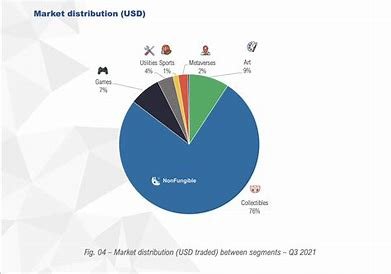
Non-Fungible Tokens (NFTs) have sparked debates not only about their economic value and potential but also about their environmental impact. As digital assets minted on blockchain platforms like Ethereum, NFTs have raised concerns about energy consumption and sustainability. This article delves into the discourse surrounding the environmental footprint of NFTs, exploring the facts, misconceptions, and ongoing efforts to mitigate their impact.
Q&A:
- How do NFTs contribute to energy consumption and environmental concerns?
- NFTs are created through a process called minting, which involves complex cryptographic computations that require significant computational power and energy. This process contributes to the overall carbon footprint associated with blockchain transactions.

- What is the primary source of energy consumption in NFT transactions?
- The majority of NFT transactions currently occur on blockchain networks like Ethereum, which rely on Proof of Work (PoW) consensus mechanisms. PoW requires miners to solve complex algorithms, consuming substantial amounts of electricity.
- Are all NFT platforms and blockchains equally harmful to the environment?
- No, not all blockchains operate on energy-intensive PoW consensus mechanisms. Some platforms, like Flow and Tezos, utilize Proof of Stake (PoS) or other consensus mechanisms that are more energy-efficient compared to PoW.

- What are the efforts underway to mitigate the environmental impact of NFTs?
- Blockchain developers and platforms are exploring solutions such as transitioning to PoS, implementing layer 2 scaling solutions, and supporting carbon offset programs to mitigate the carbon footprint of NFT transactions.
- How can individuals and organizations participate responsibly in the NFT market while considering environmental concerns?
- Participants can choose NFT platforms that prioritize sustainability, educate themselves about blockchain technologies and energy consumption, and support initiatives that promote renewable energy and carbon neutrality.

Table: Comparison of Blockchain Platforms and Environmental Impact
| Blockchain Platform | Consensus Mechanism | Energy Consumption | Environmental Impact |
|---|---|---|---|
| Ethereum | Proof of Work (PoW) | High | Significant carbon footprint from mining operations |
| Flow | Proof of Stake (PoS) | Low | More sustainable energy consumption |
| Tezos | Delegated Proof of Stake (DPoS) | Moderate | Lower energy usage compared to PoW |
| Binance Smart Chain | Proof of Stake Authority (PoSA) | Low | Reduced environmental impact |
| Polygon (Matic) | Proof of Stake (PoS) | Low | Supports scalability with minimal energy consumption |

Conclusion:
The environmental impact of NFTs remains a topic of scrutiny and discussion within the blockchain community and beyond. While NFTs offer innovative opportunities for creators and collectors, stakeholders must address concerns about energy consumption and sustainability. By promoting transparency, adopting energy-efficient blockchain solutions, and supporting initiatives that prioritize environmental responsibility, the NFT ecosystem can evolve towards a more sustainable future. Understanding the nuances of this debate is essential for making informed decisions and shaping responsible practices in the evolving digital landscape.